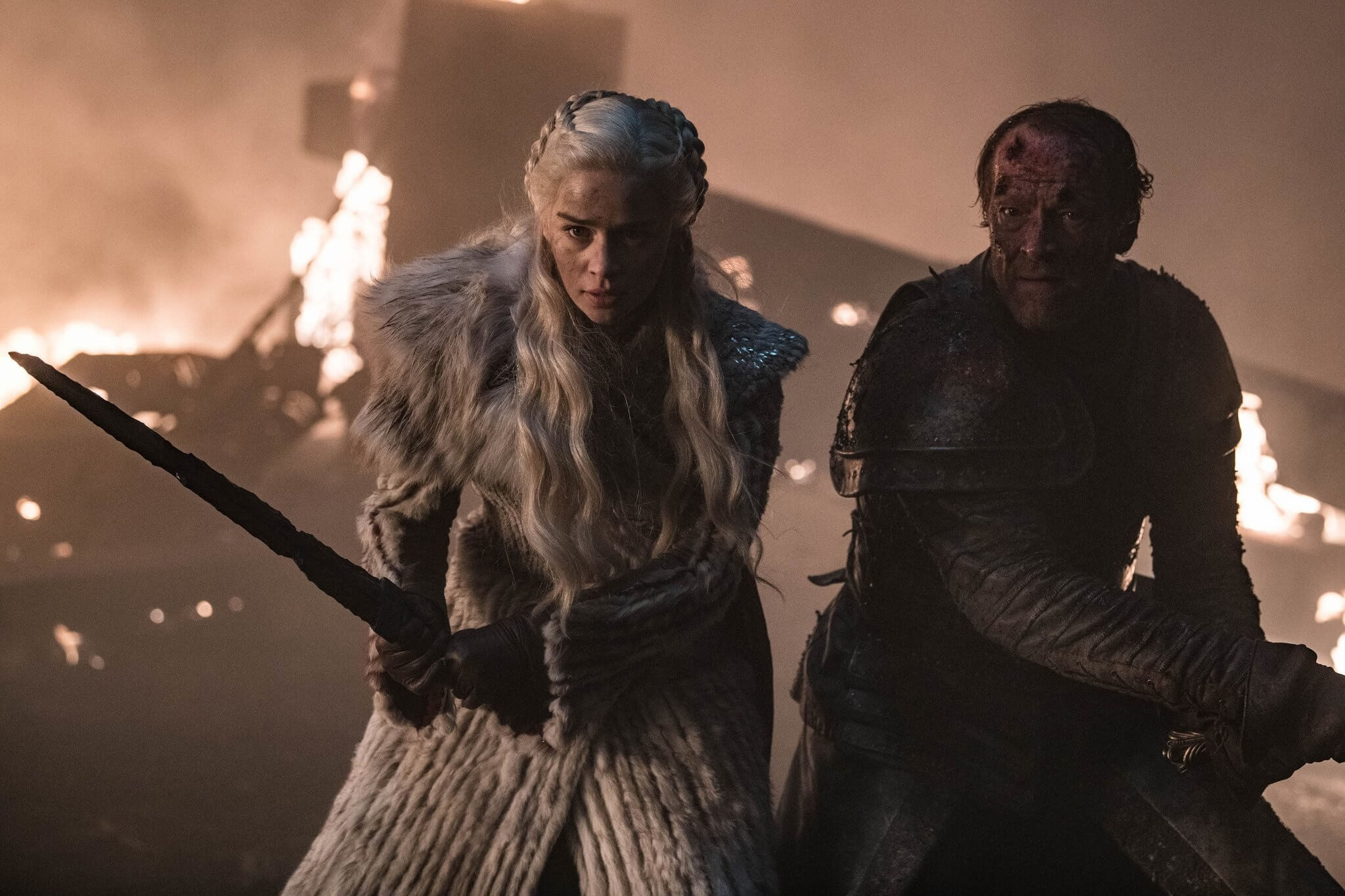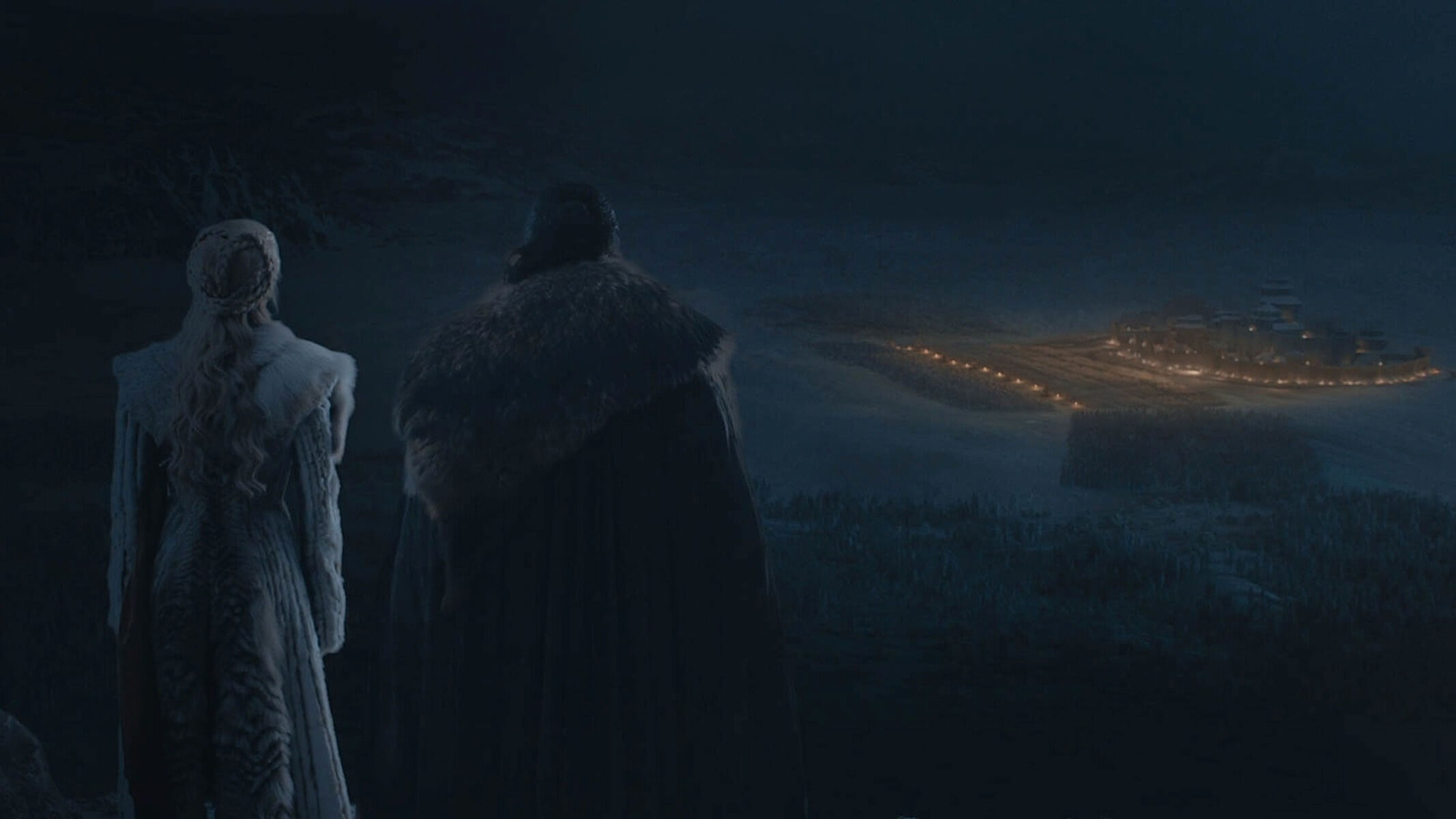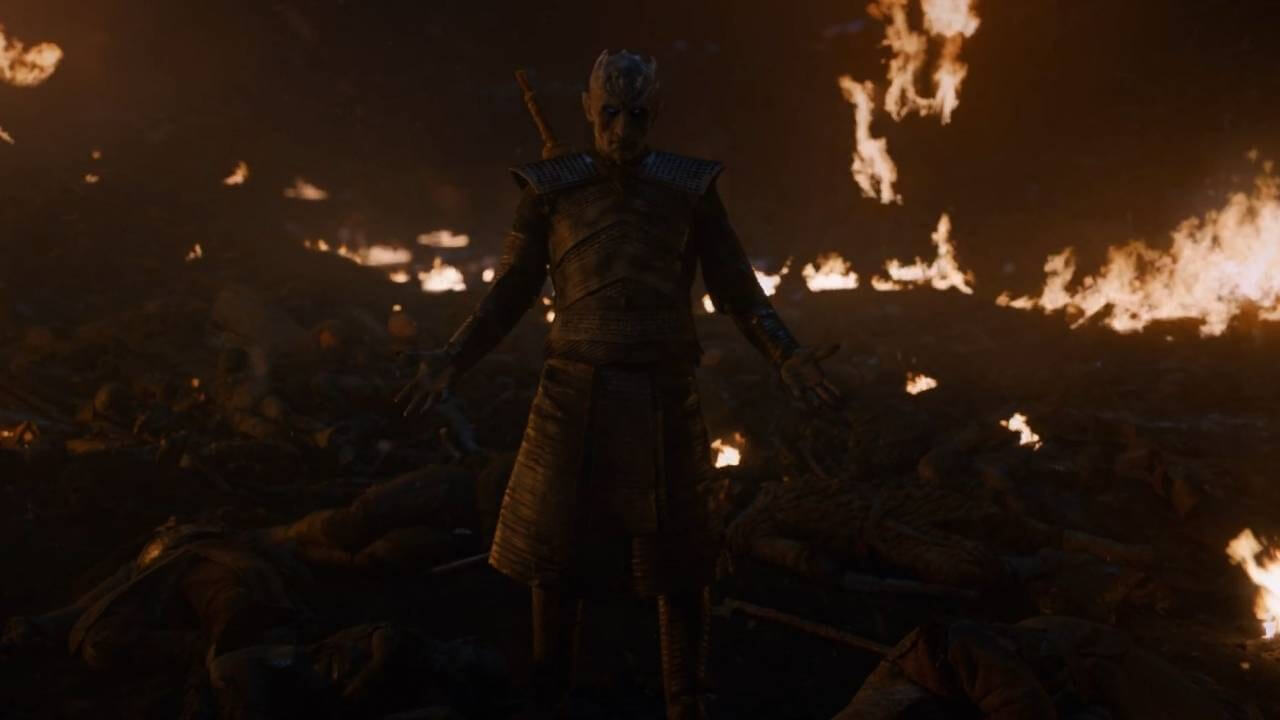WTF?! Remember when Apple blamed the iPhone 4’s bad cellular reception on how users were holding their phones? Now it seems HBO is pulling a similar trick with the latest episode of Game of Thrones. Although they may have a good point.

Warning: Mild spoilers ahead.
Game of Thrones Episode 3 of Season 8, titled “The Long Night,” revolved around an epic battle against the dead — wights, White Walker, Dothraki, and the like — all very exciting. The problem was the cinematographer thought it would be a good idea to film the whole battle with firelight as seemingly the only lighting (likely a result of overzealous color grading in post). The episode was very dark and not in the good GoT way.
It had watchers scrambling to adjust the contrast and brightness on their TVs so that they could see what was happening (see images). Fans were not impressed and took to Twitter to complain. Reactions were so plentiful that The Long Night became the most tweeted about television episode in history.

Of course, with that much backlash, HBO could not just sit on its hands, but maybe it should have. Instead of apologizing for the poorly lit filming, cinematographer Fabian Wagner blamed technology and viewers for the viewing troubles.
“A lot of the problem is that a lot of people don’t know how to tune their TVs properly,” Wagner told Wired. “A lot of people also, unfortunately, watch it on small iPads, which in no way can do justice to a show like that anyway.”
The solution: Watch the episode in the cinema.

“Game of Thrones is a cinematic show, and therefore you have to watch it like you’re at a cinema: in a darkened room,” was Wagner’s advice.
Great. Except it’s not a cinematic show; it’s a TV show — often subjected to compression for those streaming the episode. There is a fine line between artistic expression and making that art enjoyable to view. Wagner appears to have failed to consider his primary audience when making lighting decisions.
Second take (Julio):
Reading Cal's original story I felt compelled to agree with HBO's cinematographer. Maybe it's not something that everyone experiences, but delivery matters, and in some cases the screens/devices you watch and most importantly the source you watch from can make or break the experience. I get HBO through my DirecTV subscription (that I hope to cancel soon) and maybe it was the kind of compression they used but in dark scenes I even observed severe pixelation. Coming from a supposedly HD source (upscaled 720p most likely), this was terribly bad for certain scenes. Long story short, I plan to rewatch this impressive 82 minute episode once I get ahold of a 1080p or better recording.
https://www.techspot.com/news/79893-game-thrones-cinematographer-fault-long-night-dark.html